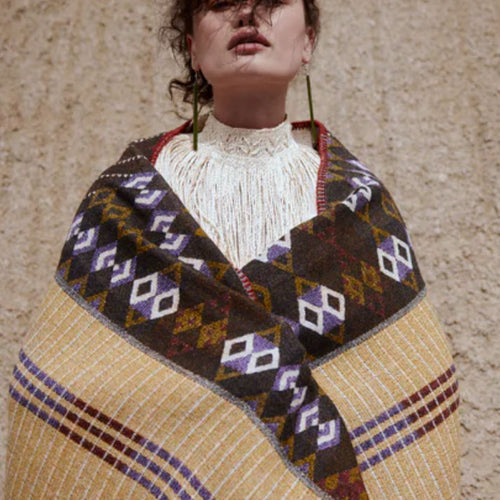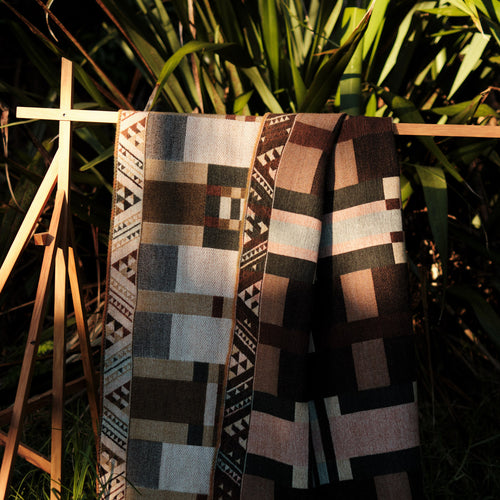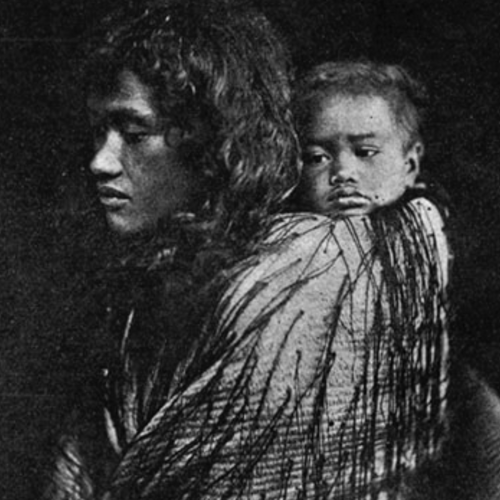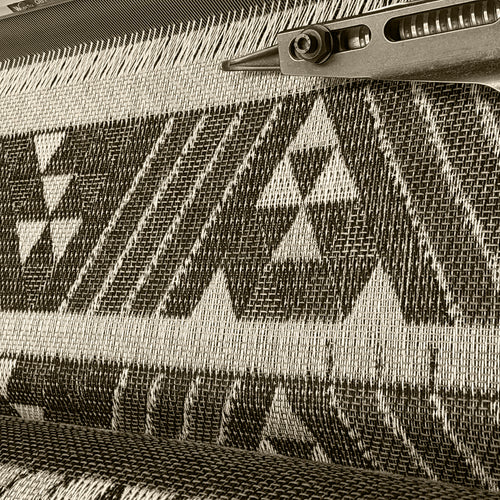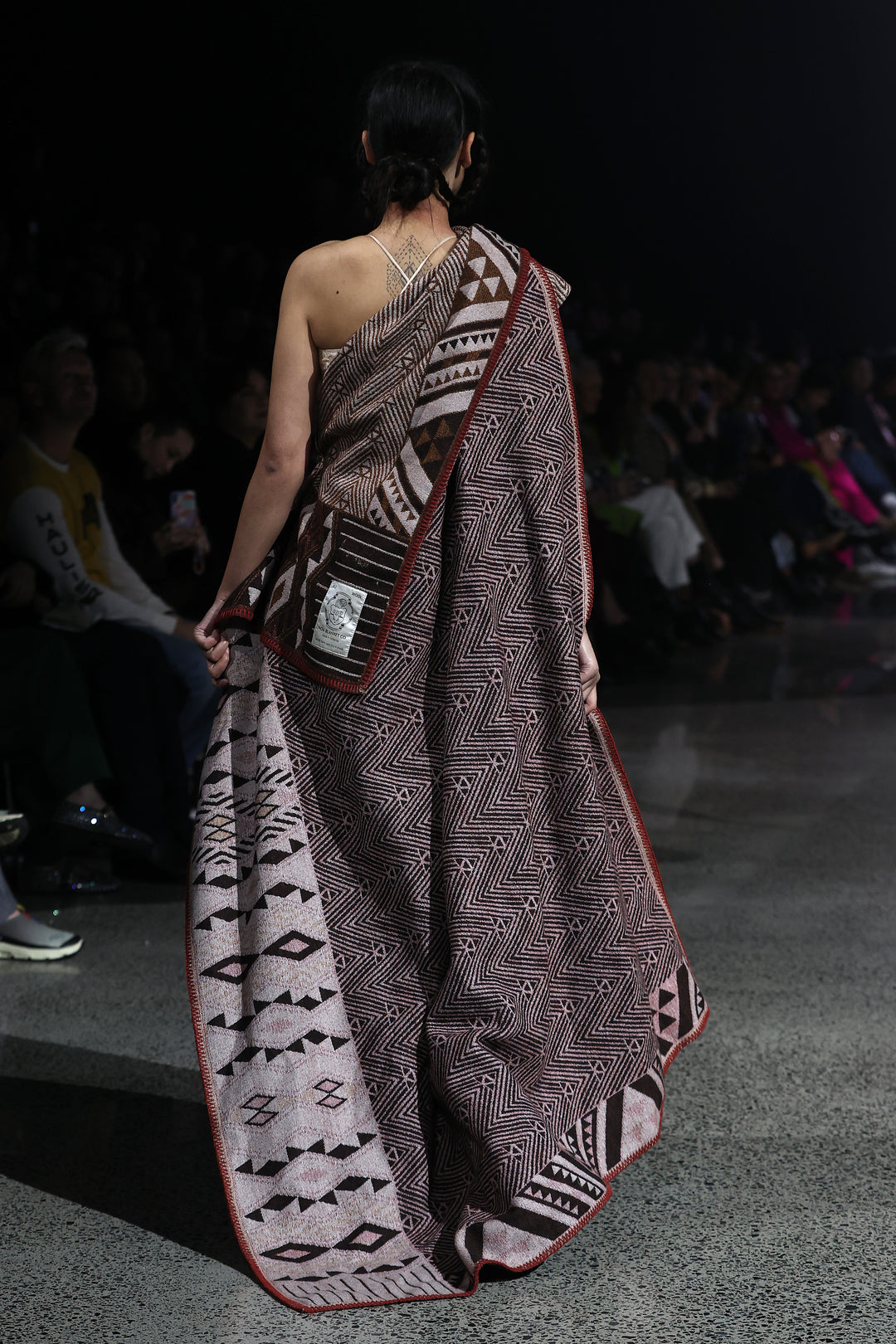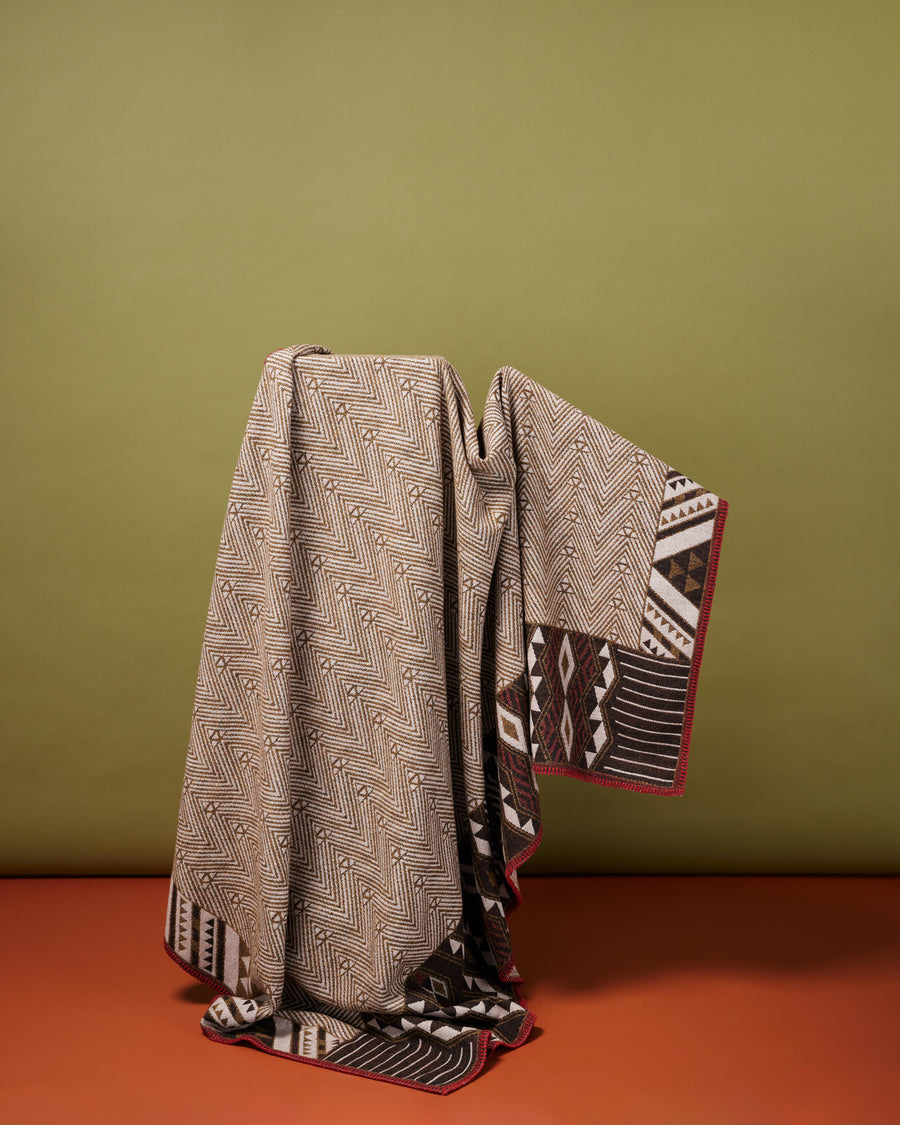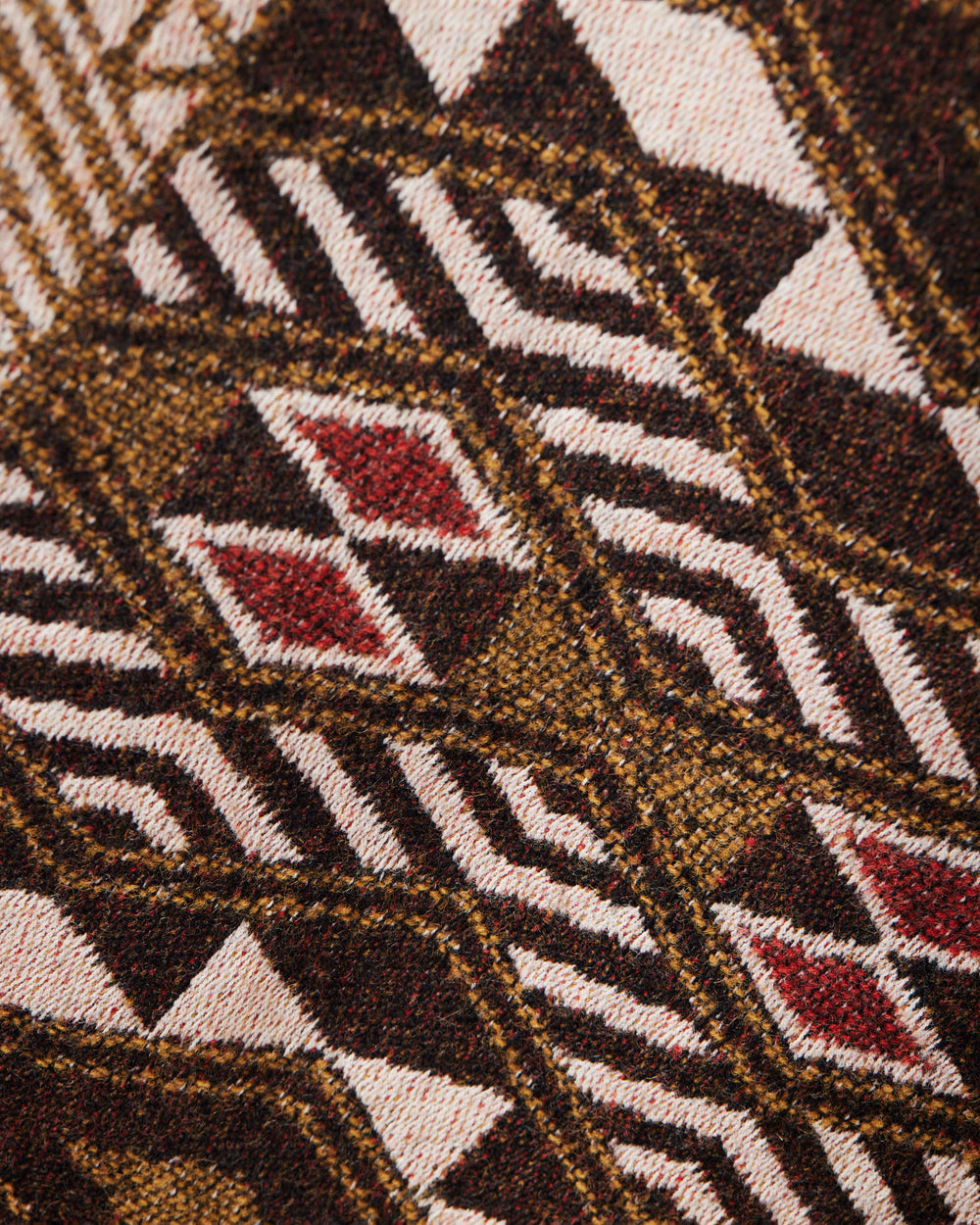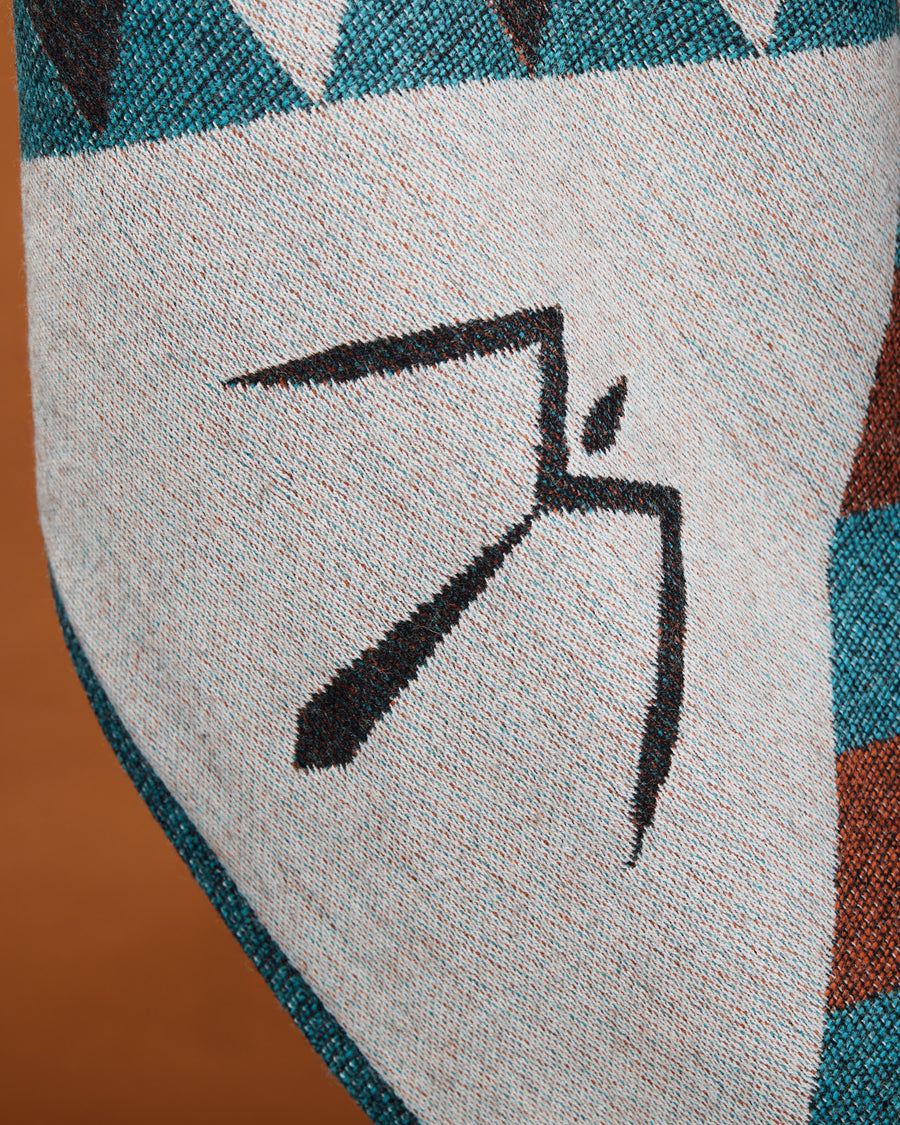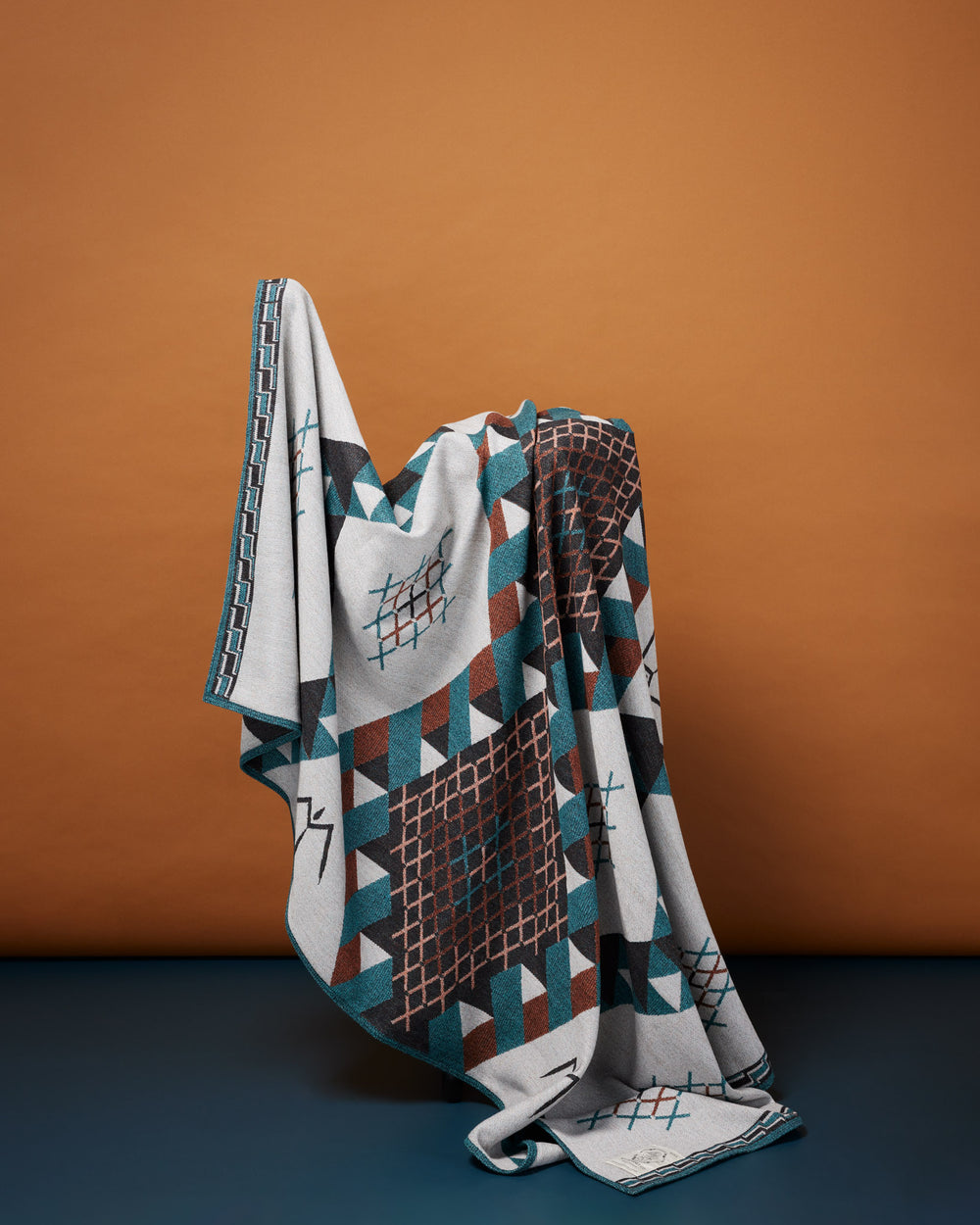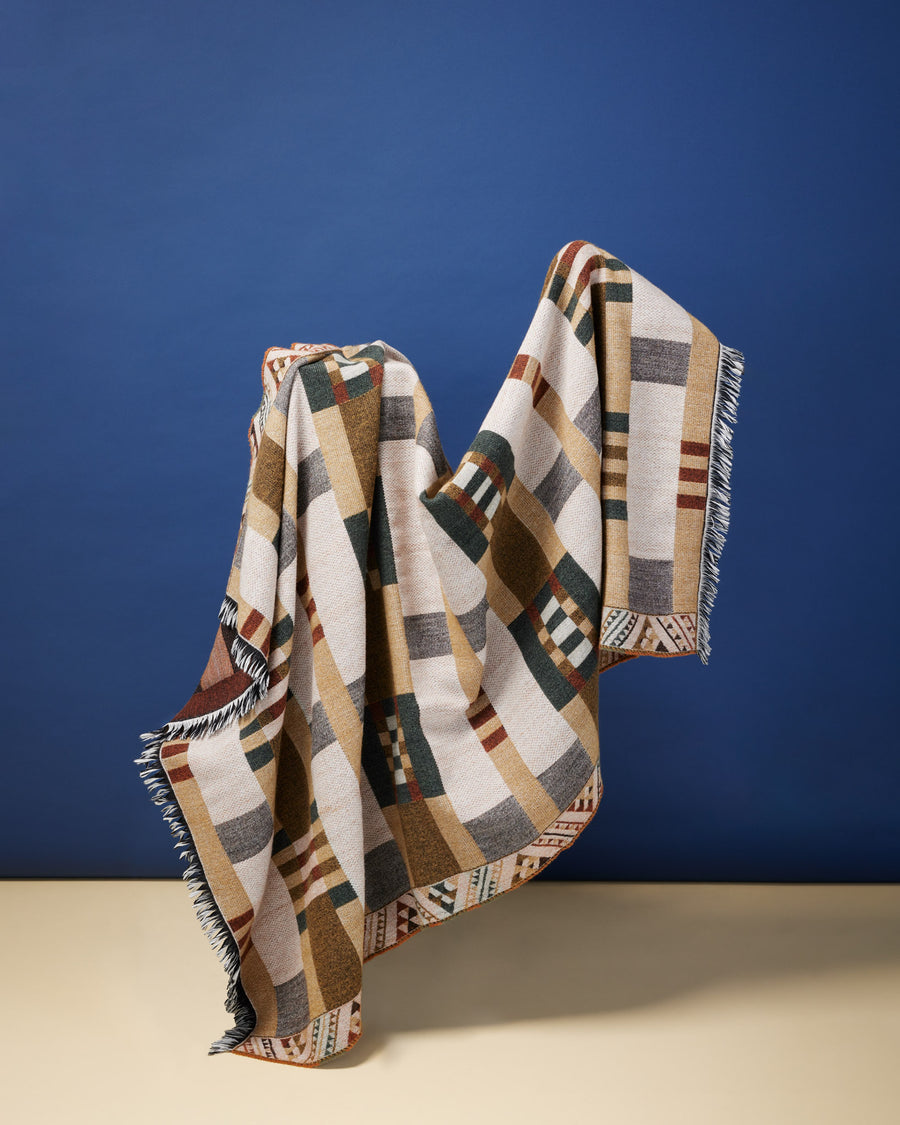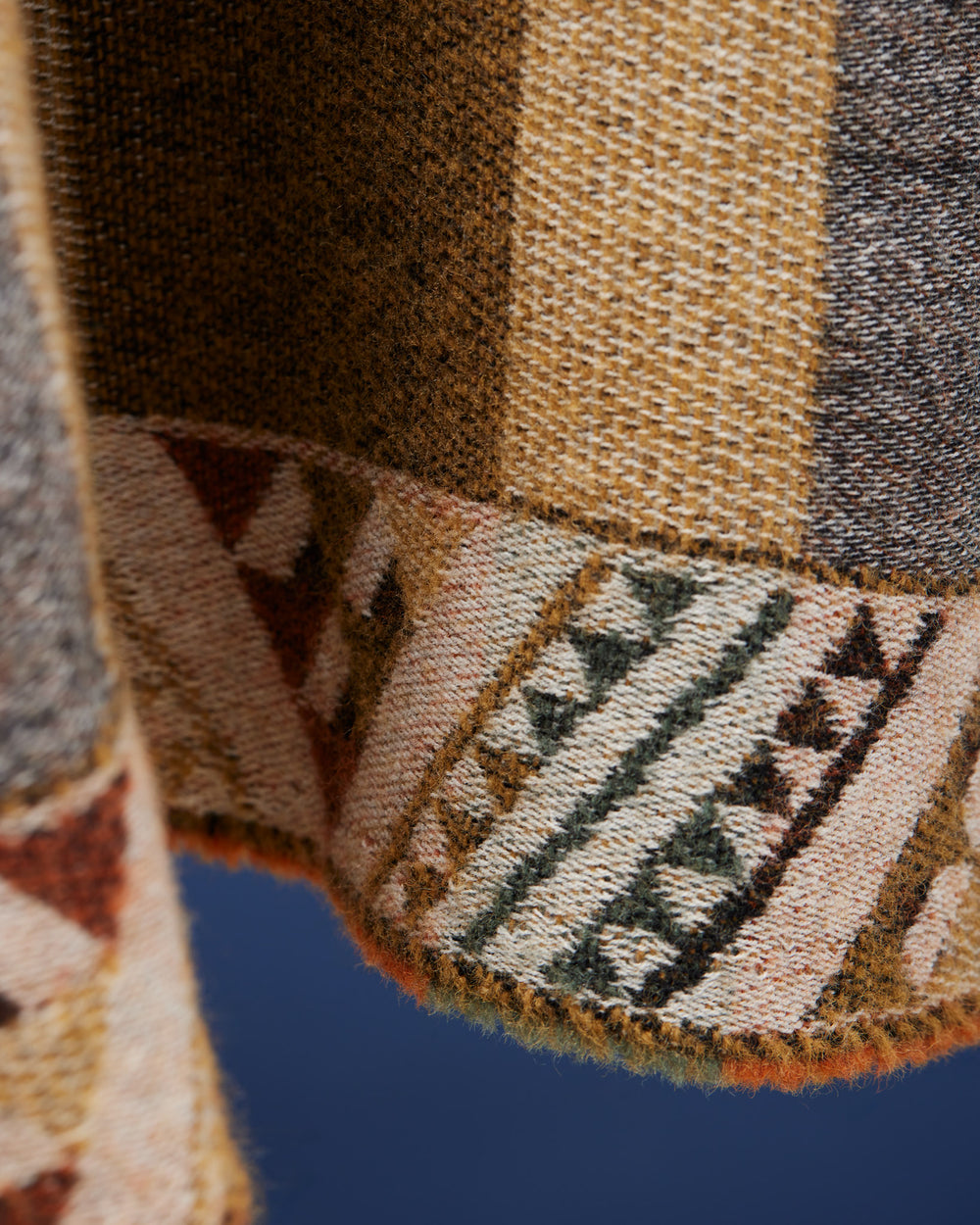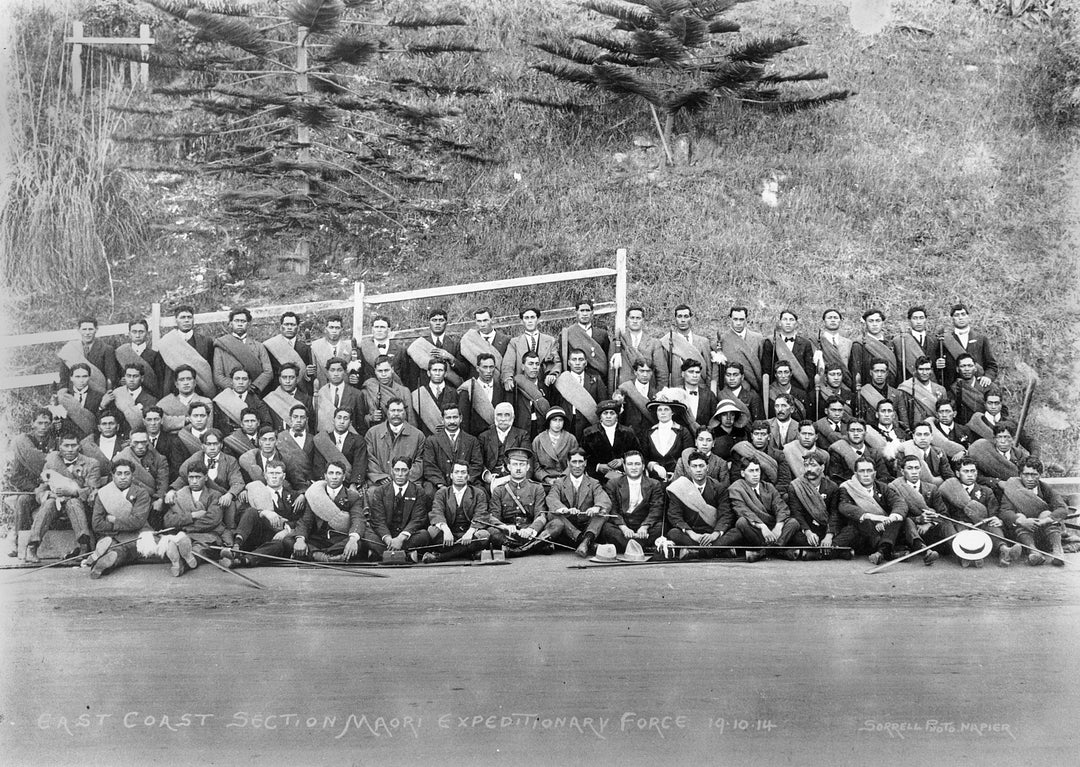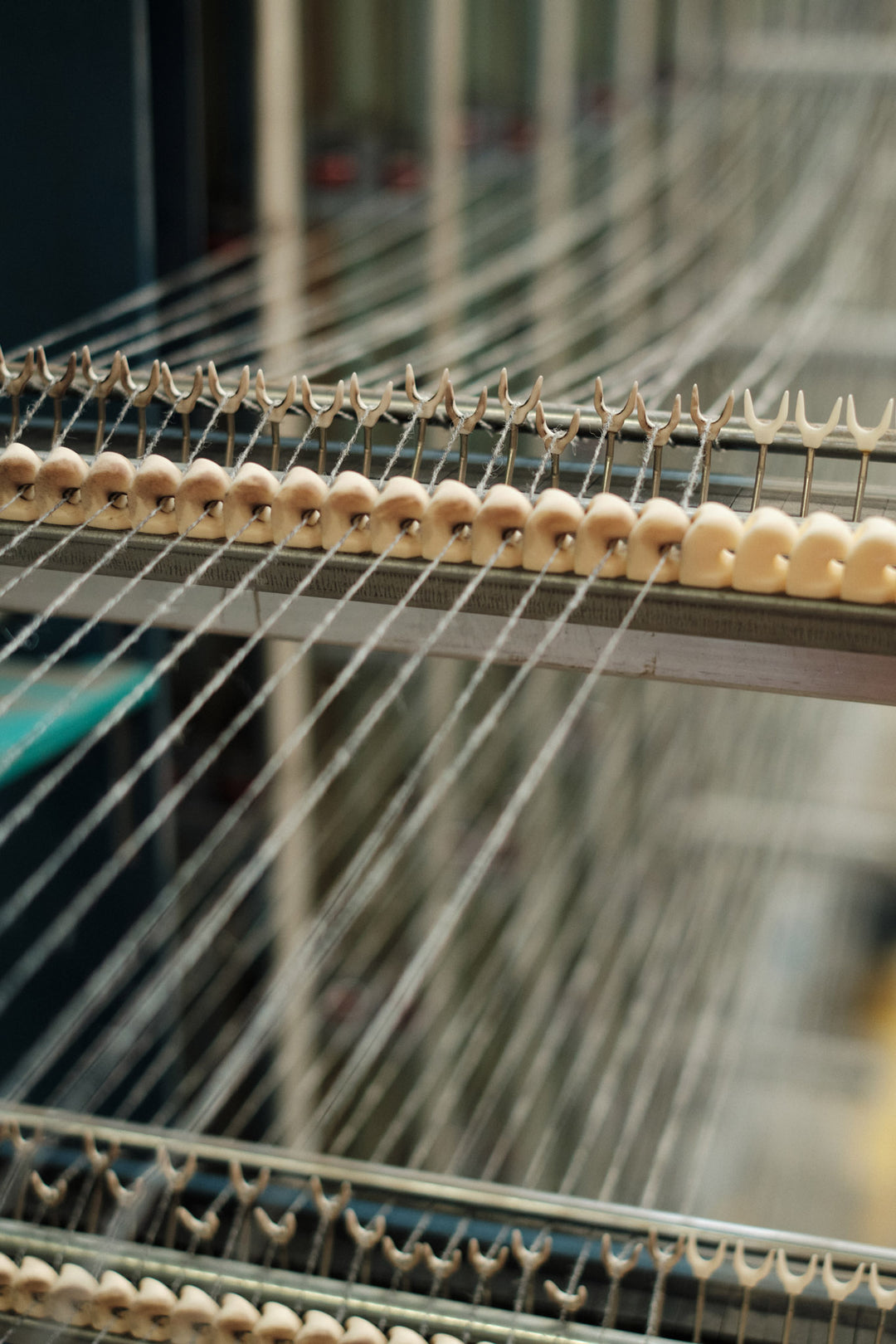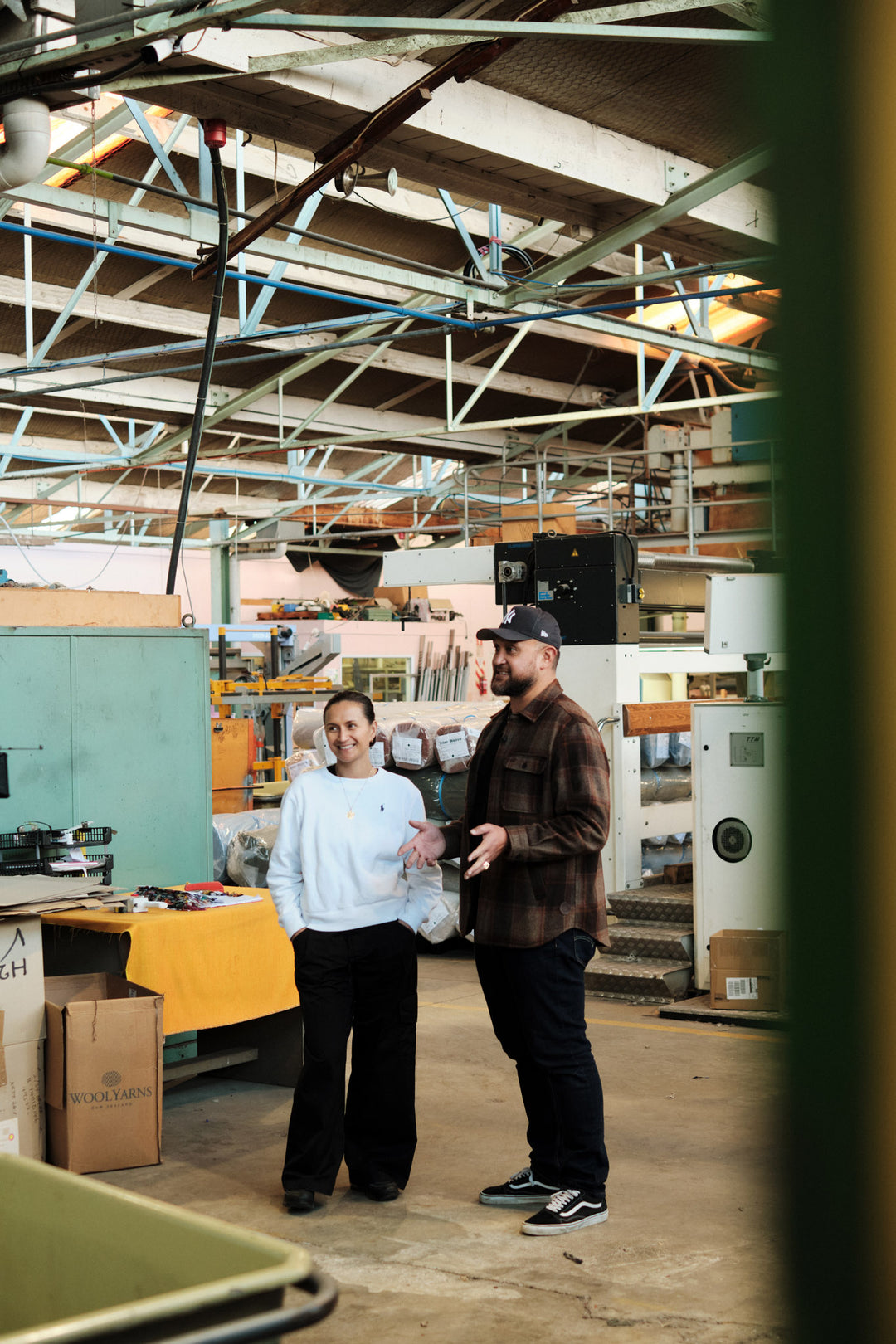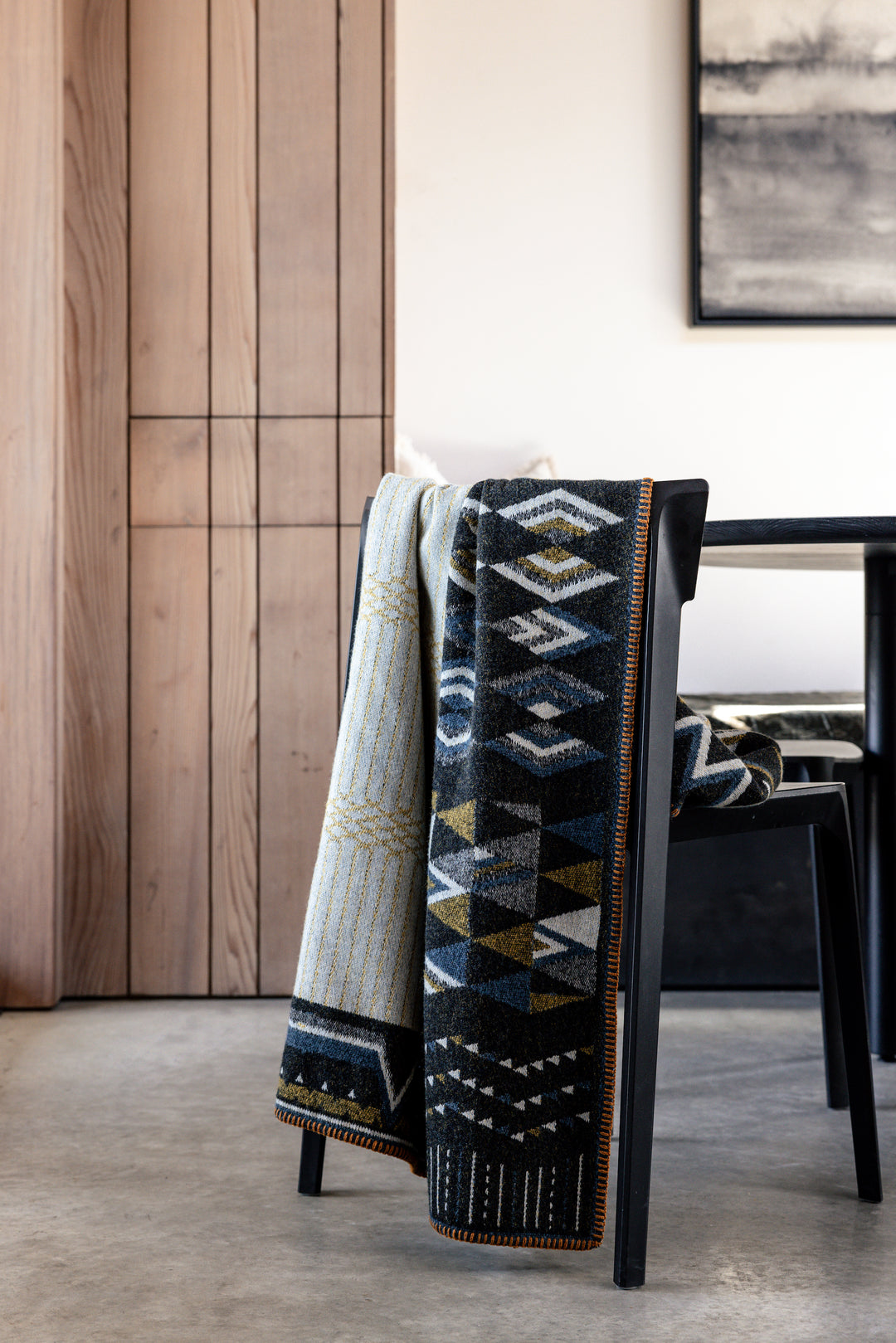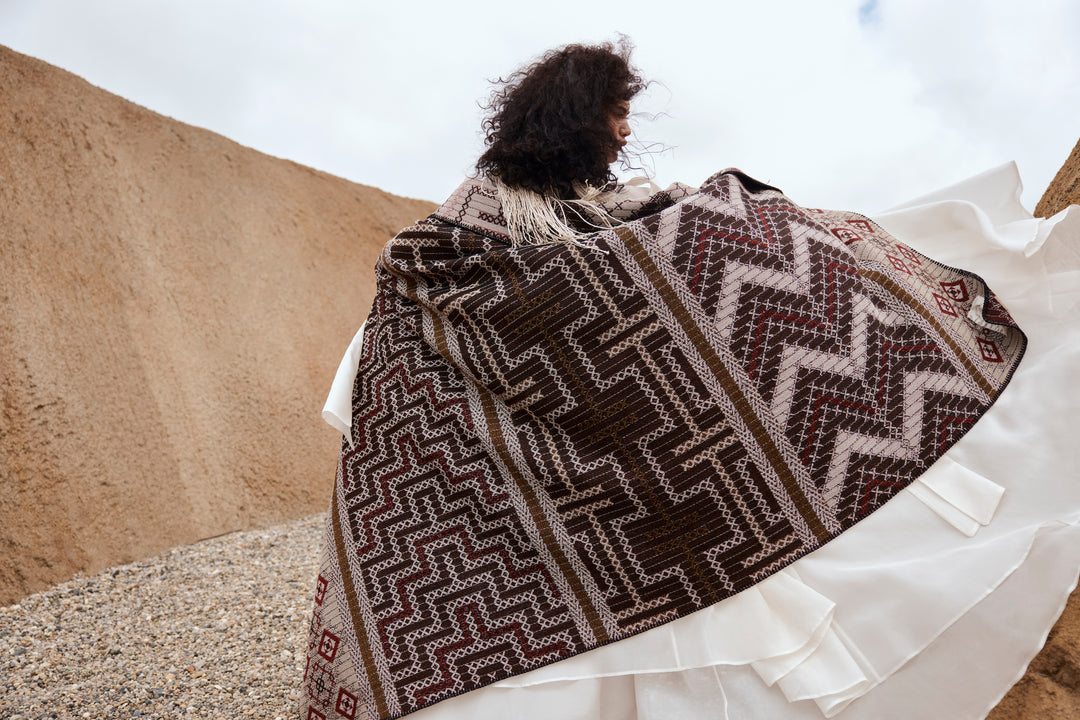He Kōrero Noa: Kahuria NZFW, innovation, representation and envisioning the future with Dr. Bobby Luke of Campbell Luke
Late in August, we supported our dear friend Dr. Bobby Luke of Campbell Luke for his show, He Oranga Ngākau, at Kahuria New Zealand Fashion Week. We connected earlier in the year over our experiences with grief and loss and how turning to creative outlets was a way to share love, lessons and stories with the world. The show was presented in honour of Bobby's beloved late brother, capturing the essence of equilibrium, harmony, peace and restoration - a testament to “ora” (the state of being alive).
We are so proud of Bobby and his team and humbled for the opportunity to weave our stories into the show, with Noa blankets suspended from the ceiling and draped across models as they walked the runway.
We sat down with Bobby post show and found out more about his journey, his process and what’s next.

Kia ora Bobby, can you please tell us a little bit about yourself and your path to starting Campbell Luke?
Tēnā koutou, he uri au nō Taranaki ki te tonga. Ko Ngāti Ruanui te iwi, ko Hamua, ko Hapotiki ōku hapū, ko Tangahoe te rorohenga, ko Taiporohēnui toku ūkaipō.
At present, I find myself wearing many hats and consider myself a hybrid of various intersecting cultural narratives. These narratives are significant due to my hapū-centric upbringing in Taranaki and the wealth of knowledge I gained from my early years. Growing up with a strong matrilineal influence, my mother's guidance has left an indelible mark on everything I undertake. It is within this context Campbell Luke was established in 2014 shortly after I completed my formal training in fashion design at Auckland University of Technology, then subsequently, pursued formal training in visual arts, specialising in lens-based practices, articulating my artistic practice.
Later on, I embarked on a doctoral journey with the aspiration of amalgamating these once compartmentalised practices, while incorporating the knowledge rooted in my upbringing and the stories shared within our Pā. Campbell Luke has evolved into a vessel for these creative practices, encompassing not only creative outputs but also research and unique methodologies. My aspiration was to pioneer a novel pedagogical approach within a design institute, another role I assume as an academic, as a lecturer in design for social innovation.
Congratulations on your show at New Zealand Fashion Week, it was such an incredible show. Can you talk us through what inspired the collection and how you brought this to life?
To answer this question, I would probably need to discuss the process. I always start with a feeling, generated by the different interactions I have had over a period of time, different references that have influenced my thinking, conversations I have had with people and time spent with my Moemoeā. As these collective thoughts weave together I start to signpost different visual references, which tend to be objects of significance. Once these are gathered, I research and study them visually and contextually but I always seem to have one underlying theme or Aho woven throughout the whole process, and that is Rongo. More particularly Rongo-a ̄-whare, energies that fall in the context of Female enacted peace, and the healing nature of matrilineal balance and equilibrium.
As the key driver of this kaupapa, this collection was a conversation about healing and what brings me joy, and it was contextualising the show, curating every aspect that acknowledged this form of healing, life and enlightenment.

How do you balance traditional Indigenous elements with modern fashion trends in your collection/s?
I usually don't look at trends, I tend to look back to my last collection and integrate it into the new collection and redevelop different shapes, silhouettes and details. The only time trends usually influence my collections is when there are unconscious styling decisions which are influenced by shoes, accessories, hair etc.
Looking at my collections, the only (literal) element of ‘traditional’ aspects have been the kete and kairaranga styled with the collection. For me the Māori elements lie in the act of materialising the whakapapa of the garment. As I create new pieces, each piece has a level of significance, collected through nostalgic moments and conversations. For example some pieces I have made are from old mattress covers from my Marae, covers that have been subject to many significant moments and conversation. I could easily resonate this feeling Mata Aho’s earlier works such as Te Whare Pora (2012).
Another is sheets gathered from my dad and in exchange the sheets would ignite his memory and we would start talking about his childhood growing up with my grandmother. It's at these moments of tuku iho I find the most interesting and most valued. I would say, there is no balance or compromise to traditional elements, whakapapa is central to the whole process. And that process starts at Io matua o te kore.
How do you see your designs contributing to the broader conversation about diversity and Māori/indigenous representation in the fashion industry?
I think it's more than just the designs, it's about the conversations surrounding the collections that create the narrative. The designs are only one aspect, it's the different elements that carry the narrative that is equally important. I think that's where the broader conversations can happen. Re-contextualising what we thought a “Fashion Runway” is and looking at it through a different lens. For me it's an opportunity to exhibit and curate a story, create aspirations to inspire. My kakahu doesn't solely look at traditional motifs, I want to share that any material can be imbued in korero tuku iho, and other elements such as my lens based practices, performance, and other forms of visual arts practices can enhance this understanding that carries that narrative.
The broader conversation about diversity and representation is exactly that, to be represented and carry the narratives we whakapapa to and from, as natural storytellers how do we challenge the status quo.

Were there any particular stories, symbols, or rituals that served as a foundation for your collection's concept? Can you delve deeper into these..
As previously mentioned, entering the space of Rongo-a-whare was fundamental to the kaupapa and my way of knowing and being in the world. This was a process of self reflection and understanding significant moments that reflect the energies of Rongo-a-whare, how does this influence the way I live, the way I interact with people and place? Specifically highlighting the matrilineal upbringing I had and the significance of its healing abilities.
How do you envision the future of Indigenous representation in high-profile fashion events like NZ Fashion Week? What is needed to make this happen?
I think our people need to see these spaces as opportunities but also to understand the global significance and understand the worldly aspect of what this could bring. The opportunity to see themselves globally. I can appreciate our representation coming into light, but I also see room for improvement, and refinement, in striking a balance that can authentically navigate a Maori worldview and a global worldview of design.

What does a day in the life of Bobby look like?
Heaps of karakia in the morning, admin, sorting out lectures and University admin for work. Pattern making, designing, resolving details, fabrics (which is a long and slow process, as I source from multiple areas around Aotearoa, including fabric manufactures and upholstery). Researching and a lot of reading.
How do you handle creative blocks or moments of self-doubt during the design process and are there any Indigenous practices you draw upon to overcome them?
Wai, water is powerful. Going to the nearest natural sources of water, feet in the water, on my face and even from a tap if I need to. I'm very good at hiding my feelings and water allows me to be able to feel vulnerable and bring me back to myself again. This is something that also aids my creative practice - Wai-te-ika or fish waters and being cleansed by the birthing waters of Te Kōpū o te Tai Ao. Highlighting the nurture of a mother and the significance of women that have influenced my practice.
What conversations and interactions with the audience after the show most fulfilled you and why?
During the preparation days before the show, I met a fashion student, who was indecisive whether or not they wanted to continue with fashion, so I decided to invite them to the show. They messaged me the next day and said, you have inspired me and I have decided to continue to study. This is why I do what I do, to encourage future generations and to inspire.

It was an honour to be part of your show, thank you for including us. What did it mean to you to have Noa involved?
Everything, from the moment we met. The power of whakawhanaungatanga is so strong and very Maori. Noa played a huge part of the show, I thought it displayed an alignment where strong forces could come together and create magic. The kaupapa imbued in the korero of the blankets, the story telling, the whakapapa, everything that aligns with myself as a person, and also my partner. That for me is the most important. Our relationship as two peoples who understand and come together.
How did you feel post-show?
Tired and need more rest !
What’s next for you?
Evaluate and reflect !
